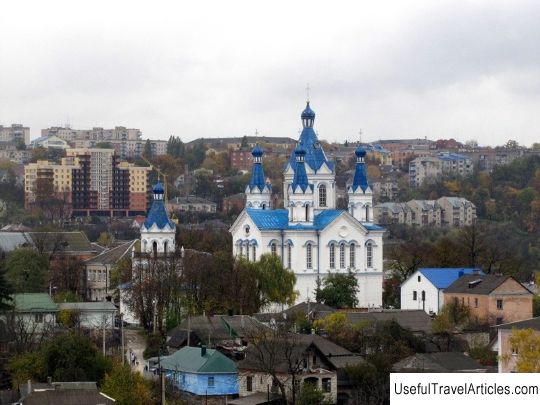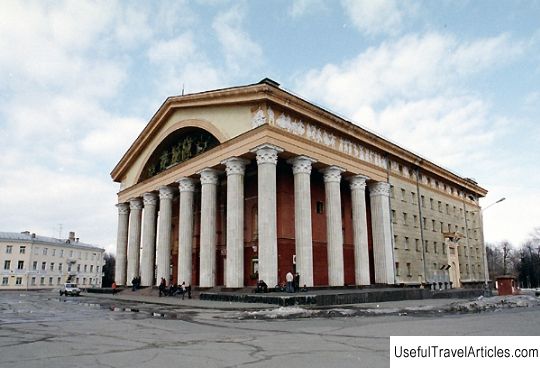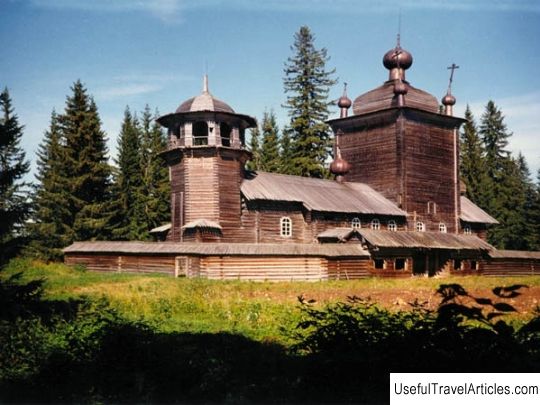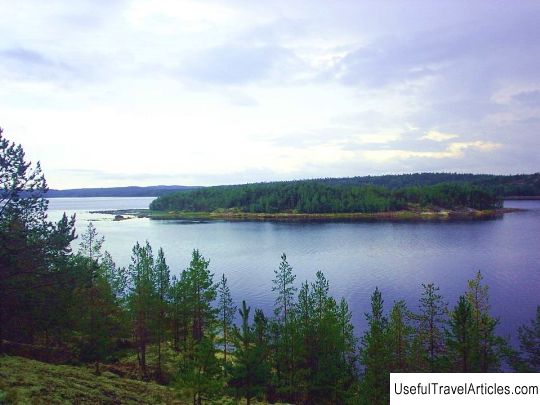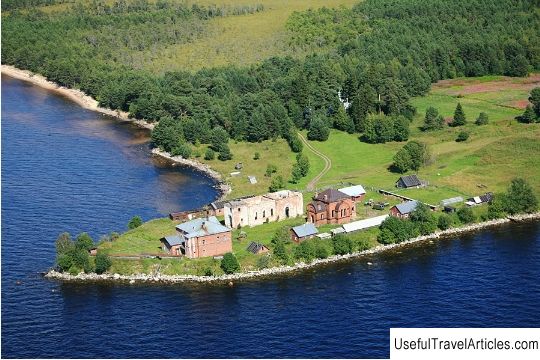Architectural ensemble ”Kizhi” description and photos - Russia - Karelia: Kizhi
Rating: 7,5/10 (100 votes) 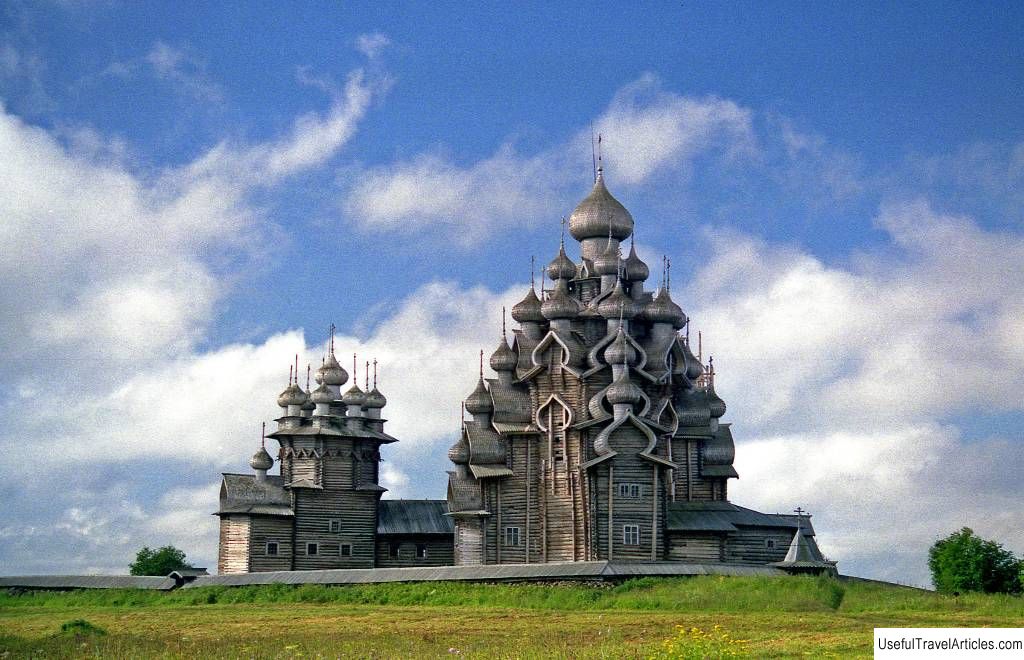
Kizhi architectural ensemble description and photos - Russia - Karelia: Kizhi. Detailed information about the attraction. Description, photographs and a map showing the nearest significant objects. The name in English is Kizhi. Photo and descriptionKizhi is the largest and most famous reserve of wooden architecture in Russia. It is located on an island in the middle of Lake Onega. Architectural masterpieces from all over Zaonezhie were brought here, and some of them have been preserved since ancient times on the island itself. The main architectural complex of Kizhi - Kizhi Pogost - is included in the UNESCO World Heritage List. But besides him, there are several dozen interesting monuments with their expositions, unique nature and landscapes. History of the islandThe first settlements on these islands date back to the X-XII centuries. The population was mixed: Finns, Slavs and Vepsians lived here. The name comes either from the Vepsian word "chiji" - water moss, or from "kizhat" - games, and then perhaps it hints that there were some ancient sanctuaries here. In the 16th century, there were 12 villages on the Kizhi island. Even then, the center of the island - the Spassky Pogost - was mentioned - in the 16th century it was the only parish church on the island, and by the 17th century there were already 12 temples, and there were many more settlements. Kizhi became a nature reserve since 1945. The museum itself was founded in 1960, and since 1966 wooden buildings from all over Zaonezhie have been brought here. The history of the museum is closely connected with Alexander Viktorovich Opolovnikov, a scientist and restorer, a leading Soviet specialist in wooden architecture. He defended two dissertations, candidate and doctoral, on the restoration of wooden architecture. A. Opolovnikov carried out a large-scale restoration of the Kizhi churchyard in the 1950s. Under his leadership, many other objects were transported here and restored, for example, the chapel of St. Lazarus or Elizarov's house, his project underlies the exposition of the modern Kizhi museum and the location of objects. He collected a huge database on wooden architecture - the museum's funds contain hundreds of his drawings and sketches. In 1990-1991, archaeological excavations were carried out on the island under the leadership of A. Spiridonov. Were explored the Kizhi churchyard, the village of Vasilyevo. The earliest finds were found in a village on the southeastern coast, where Yakovlev's house is now. In addition, Kizhi are also unique natural objects - some species of northern orchids grow here, which are found only on these islands and are included in the Red Book. Now there is a large museum complex: international festivals are regularly held, folklore workshops work, master classes on ancient crafts are held, you can ride around the island in an old carriage or sail around it with a boat tour. Kizhi Pogost The most important museum site in Kizhi, included in the UNESCO World Heritage List, is the complex of the graveyard of the village of Spasova - Spassky Pogost or simply Kizhi Pogost. It consists of two churches, a bell tower and a fence. The Transfiguration Church was built in 1714. It is a 37-meter wooden church crowned with 23 domes. It was felled in Russian traditions "without a single nail" from pine and spruce, and the domes are covered with aspen ploughshare. At the beginning of the 19th century, the church was sheathed with boards, and the domes were covered with iron. In the middle of the 19th century, a rubble foundation was laid under the sagging chapel. Inside there is a carved wooden iconostasis made in the second half of the 18th century. We know the name of one of the masters - Stepan Afanasyev. Some icons are older than both the iconostasis and the church itself. For example, the main temple icon "Transfiguration" dates back to the 17th century - it probably remains from the previous Transfiguration Church, which once stood on the same place. The Transfiguration Church was "summer", unheated. Next to it stands the Intercession "winter" church. This is also a wooden, many-domed temple, typical for the Russian north, it was built in 1693 and rebuilt from 1720 to 1749. It has nine chapters - according to the number of angelic ranks. It was she who was the first temple of the complex. The warm churches of the Russian north consisted of two rooms: a warm refectory, heated in black - and the church itself with an altar. The iconostasis here is "tyablovy", that is, simply consisting of wooden beams. The original basis of the iconostasis has not survived; now it has been restored. But the icons themselves are mostly ancient. The bell tower of the complex was created in the same northern style, but it is much younger - built in 1863. It is a typical northern octagon with a small belfry on nine pillars. Most of all, it looks like a watchtower of a wooden prison. The name of its builder is known - it is the peasant Sysoy Osipov, a local native. The wooden chopped fence with turrets and candle shops was made in 1780. The entire complex was restored in 1949-1959. The head of this restoration was A. Opolovnikov. The personal appearance of the Transfiguration Church was returned. Subsequently, many challenged his decision - to remove the late cladding from churches and domes, because this way the tree would be worse preserved. But now we see the true appearance of architectural masterpieces. In the course of this restoration, the dilapidated fence was practically reassembled. Wooden architecture requires especially careful preservation, so the Kizhi churchyard is periodically repaired and is constantly under the supervision of specialists. The last restoration took place in 2017. The southern tip of the island The Kizhi churchyard is located in the south of the island. Not far from it there are several more interesting objects - if there is not much time to visit the reserve, then they are usually examined. It, for example, the huge estate of the Oshevnev family in 1876: a two-story rich peasant house, which combines a warm residential hut, a gallery-gulbische and many outbuildings. Another similar large estate here is the house of the Elizarov family from the village of Seredka. You can also see the wooden chapel of St. Lazarus of the 15th century, brought here from the Murom monastery, and another chapel - the Archangel Michael from the village of Lilikozero. There are several interesting old mills - a water and windmill, a smithy and many smaller outbuildings. VasilyevoThe reconstructed village of Vasilyevo is located on the western coast north of the main pier. There are 4 residential peasant houses. One of them is a historic building preserved from the village, which was here is a two-story house with a mezzanine that belonged to Vasiliev. It is made of rough timber. Another house - Kondratyeva - is simpler, one-story. The most interesting object in Vasilyevo is the Assumption Chapel of the late 17th century. At the beginning of the 19th century, a belfry was added to it. It is log and stands as if on "bulls" on huge stones. East Coast On the eastern coast of the island, exactly opposite the western quay, there is a complex of buildings from the Yarsk Karelians. This is the place of the oldest settlement on the territory of the island, archaeologists have found a settlement here of the 10th century. There is a huge house of the Yakovlevs from the village of Klescheila - a two-storey house made of timber. In winter they lived here on the ground floor, and in the summer on the top. The cattle shed was not built separately, but was located in the same building. The house has a balcony with arches and carved window frames. Near the house there are three more large barns from different Karelian villages, Riga and a worship cross-chapel of 1793 from the village of Chuinavolok. In the center of the island, on the east coast, there is another reconstructed village - Yamka. This village has existed here since 1563. The layout and the number of houses have been preserved here, but the houses themselves are mostly brought from other villages. There are eight residential buildings, three barns, a stable, a smithy, a barn, a windmill and two chapels. Most of the buildings date back to 1850-1890. All houses here have carved platbands and rich decor. Here you can better than in other places, see the features of the huge houses of the Russian north. If to the south the outbuildings were usually separated from the house, then in the north they formed one large complex, which could include up to five family huts and many premises of an economic nature. One type of such building is called a "purse". A characteristic feature of these houses was an asymmetrical roof, because its ridge did not pass in the center of the general building, but in the center of its residential part. The second type of northern house, which can also be seen here, is the "verb", when the outbuildings were perpendicular to the living quarters. The third type of northern houses - "timber", it is the most of these in the Yamka. It is just a huge rectangular house with a symmetrical gable roof, where outbuildings and residential buildings in a complex order occupied two floors. To the north of Yamka there are three huge manor houses from the Pudozh district and three barns attached to them. All three houses represent different types of peasant dwelling construction. They face the shore with their front facades, so they look especially good from the water. And even further north on the cape there are several interesting utility rooms, barns, rigs brought from Vepsian villages. Interesting facts
                                  We also recommend reading Hunderfossen Park description and photos - Norway: Lillehammer Topic: Architectural ensemble ”Kizhi” description and photos - Russia - Karelia: Kizhi. |


